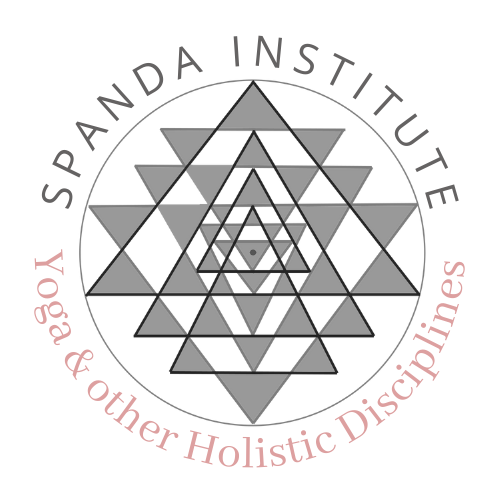Integrating Modern Science with Ancient Yoga Wisdom
Yoga's roots date back thousands of years. While its origins are still a subject of discussion, one thing is certain - it has evolved over several millennia, as everything else does, adapting to the times and the needs of contemporary humans.
Yoga began as a part of a spiritual practice seeking liberation (moksha) among Sramana and other ascetic movements. Since then, it has branched out to different methods and practices, changing and adapting. In the 20th and 21st centuries, it has spread across the globe and evolved into a holistic practice blending physical, mental, and spiritual growth. In recent years, integrating modern scientific principles has revolutionised how we understand and practice yoga. At Spanda Institute, we are at the forefront of this movement, combining ancient wisdom with scientific insights to enhance our teaching and practice.
Rooted in Tradition
Spanda Institute aims to preserve the authenticity and integrity of yoga as a spiritual discipline, as it was initially conceived and practised, ensuring that modern adaptations do not dilute or misrepresent its essence. We teach yogic philosophy based on ancient yogic texts such as Upanishads, Bhagavad Gita, Yoga Sutras of Patanjali, Hatha Yoga Pradipika and many others, acknowledging and integrating the cultural, philosophical, and spiritual context from which yoga originated. We ensure that Sanskrit, the language of yoga, is preserved and used in our training courses, making sure that teacher trainees completing our foundational courses know the basic Sanskrit terms and asana names. Our classes integrate traditional practices such as asanas (postures), pranayama (breath control), meditation, mudras and chanting that have been integral to yoga for centuries.
However, we adapt these traditional practices to our times and today's practitioners, taking the best of the tradition and passing on the parts misinterpreted by some. Traditional systems can occasionally become dogmatic, overemphasising the authority of the guru or the lineage, stifling critical thinking and personal exploration, leading to potential misuse of power or control, and not aligning with the essence of yoga. Strict adherence to tradition can sometimes lead to rigidity, with little room for adaptation or innovation, making yogic practice less accessible to people from different cultural backgrounds or physical abilities. Moreover, while traditional practices offer many benefits, they may sometimes overlook or resist modern scientific findings that could enhance or update the understanding of yoga and its effects on the body and mind.
Inspired by science
This is why we are committed to combining the best of both worlds - merging yoga's timeless wisdom with contemporary scientific understanding. What we teach in our teacher training courses is informed by functional movement, biomechanics, physiology, and neuroscience, ensuring our practices are spiritually enriching, physically safe, and effective.
Understanding the human body's biomechanics is crucial for safe and effective yoga practice. At Spanda Institute, our curriculum includes detailed studies of skeletal and muscular systems, joint positions, and the biomechanics of asanas (yoga postures). This knowledge helps our students and teachers to understand how different body parts interact during movement, allowing for personalised adjustments and injury prevention. Our programs delve deep into the body's physiological processes, including the respiratory, cardiovascular, and nervous systems. By understanding these systems, yoga teachers can better understand how different yogic tools influence our physiology and overall health and well-being. Incorporating neuroscience into yoga practice helps us understand the brain-body connection. Understanding yoga's physiological and neurological impacts allows for a more comprehensive approach to health, addressing physical, mental, and emotional well-being. Our multidisciplinary approach also uses psychology and psychotherapy to create trauma-sensitive safe spaces in our training courses, as well as teach this essential tool in our advanced courses.
Final thoughts
At Spanda Institute, we believe that the future of yoga lies in this beautiful integration of ancient wisdom and modern science. The Spanda Yoga Method represents a blend of the old and the new, the spiritual and the scientific. By integrating modern science with ancient yoga wisdom, we offer a holistic practice that is both safe and profoundly effective. Join us for one of the many Yoga Teacher Training courses we offer, explore this innovative approach, and experience the transformative power of yoga in a whole new light.
200-hour Yoga Teacher Training courses
300-hour Yoga Teacher Training courses and Advanced Modules
90-hour Prenatal and Post-natal Yoga Teacher Training
800- hour Yoga Therapy Teacher Training
Nina Vukas
Nina is the founder of Spanda Institute, Program Director and a Lead Teacher for Advanced Study Programs. She has been a Yoga practitioner since 1998, started teaching full time in 2005, and has been educating yogis on their journey towards becoming Yoga Teachers, as well as educating Yoga Teachers to advance their knowledge and teaching skills since 2009. Nina is also a Yoga Therapist, Somatic Psychotherapist, Mindfulness and Meditation teacher, and forever a student. Currently, she is studying Psychology.



